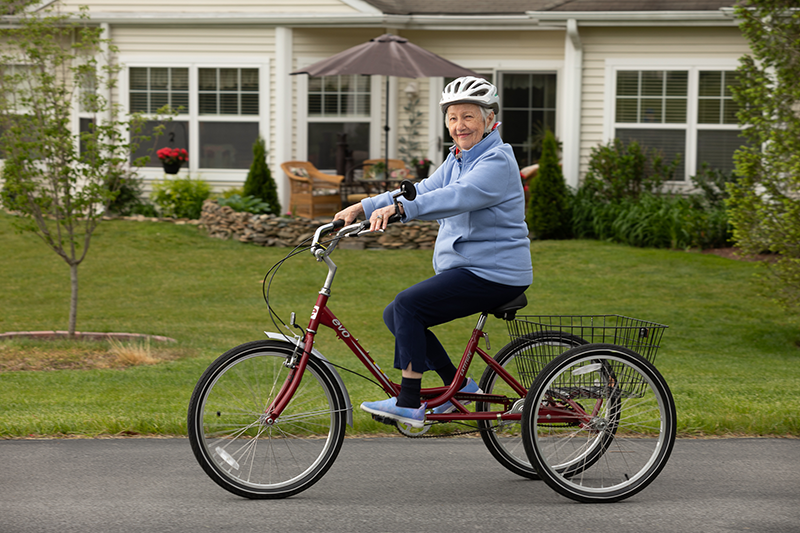What Level of Senior Care Do I Need?
If there’s one universal concept to which we can all relate, it’s that our capabilities change as we get older. We go through physical changes while aging, and this can include facing challenges to our physical and mental health, our mobility, and our ability to live independently.
It’s simply a fact of life that your capabilities at the age of 65 are vastly different than they were at the age of 25. This is, reasonably enough, why there are different levels of senior care that are available to retirees who live in retirement communities. But you are not alone if you find yourself asking questions like:
- What are the different levels of senior care?
- What level of senior care do I or will I need?
Here are some answers to help guide you as you plan out your future retirement life.

What are the Different Levels of Care for Seniors?
No two people age exactly alike. Consequently, two retirees of the same age can be facing vastly different challenges and have quite diverse health needs. This is why it’s important to have health options in your retirement.
That said, there are some general categories in which health needs can be placed. Here’s what that looks like.
Independent Living
For those in extremely good health, independent living communities are a common starting point of senior care. This level of care does almost exactly what it says on the label, in that it’s most appropriate for seniors who are completely capable of living independently, with no specific healthcare needs to be addressed. They live entirely independently.
But that isn’t to say there aren’t systems to support these retirees. Most independent living communities provide standard amenities to support the health of their residents, such as single-story residences to prevent issues associated with going up and down stairs, stability bars in bathrooms for getting in and out of tubs or showers, and being located in close proximity to healthcare providers.
Residents don’t have to dependent on any of these types of systems. They may have no need for a bathroom stability bar, for example. But they are there just in case, and in case your needs begin to change at all.
Residents of independent living communities also don’t have to mow the lawn, pick up leaves, shovel snow, or worry about any type of home maintenance.
Because these communities don’t have to provide more advanced healthcare options, the relative costs associated with living in one of these communities can be considered low compared to the options that provide more health services.
Assisted Living
Often considered “the next step up” when it comes to different levels of senior care, assisted living offers everything independent living does plus more. Retirees who still value their independence but need a helping hand with certain activities, such as bathing, dressing, or taking medication, are often most at home in assisted living retirement communities. This is for someone who can’t necessarily live alone anymore.
As these types of retirement communities offer more advanced healthcare options than independent living communities, the cost of living in one of these communities can be higher. However, considering the constantly rising costs of healthcare in the United States, it’s often advantageous for retirees who do have some specific healthcare needs to make use of an assisted living community to increase quality of life.
Skilled Nursing
The next level of senior care is often considered to be that of a skilled nursing retirement community. This level of care is associated with retirees who have more pronounced healthcare needs than those who would be more comfortable in either an assisted living or an independent living community, and often include services such as post-surgical wound care, physical or occupational therapy, pain management, and dealing with mobility issues.
Often times skilled nursing care is used to get someone back into enough shape to be able to move back to an assisted living facility or skilled nursing community. For instance, you may have a fall and go through rehab, and need skilled nursing for a short time, before being able to transfer to assisted living.
The cost of the care you receive in a skilled nursing community is commensurate with the level of care. This is, again, a more expensive option than assisted living or independent living, but as the alternatives to living in a skilled nursing community would be to outsource advanced healthcare from third-party services, your overall costs may end up much more manageable as a result.

Continuity of Care
Finally, we come to a sort of culmination of all the senior care levels available in retirement communities today. What we’re referring to here as a continuity of care is a concept that involves offering just the right level of health service needed at a specific time, without having to relocate to a different community. In other words, a continuing care retirement community, or CCRC, can act as an independent living community, an assisted living community, and a skilled nursing community, depending on your healthcare needs. A resident may enter as independent living, enjoying the pool every day and taking evening trips to the theater, but should a higher level of care such as assisted living or skilled nursing ever be needed, it’s available on the same campus.
Fee-for-service CCRCs may offer independent and assisted living together, but should you need to move to assisted living, your fees change drastically to accommodate. CCRCs that offer a Type A “Life Care Contract” offer a more predictable plan, where monthly fees do not increase based on a need for higher care. You pay a move-in fee up front that prepays for your future healthcare, and a typical monthly fee for living expenses and amenities. You can feel safe knowing that future levels of care like assisted living and skilled care are already covered and already included within your existing budget. This is why CCRCs are often the most cost-effective option overall.
Choosing the Right Level of Senior Care for You
Choosing a community with the appropriate levels of senior care is quite obviously a personal decision. Such decisions are based on your current health, any specific healthcare needs you have now, and any possible ones in the future. Someone who is able to navigate around entirely on their own does not belong in an assisted living facility, while someone who has memory issues impacting their ability to take medication, should perhaps not live independently. It will take an open and honest assessment of the situation to determine which option is the best for each individual person. For those who are healthy and active enough for independent living, you may want to consider a CCRC so that you can be covered should anything change in the future.
If you would like to learn more about CCRCs, you can explore any of the 28 campuses run by Acts Retirement-Life Communities.





